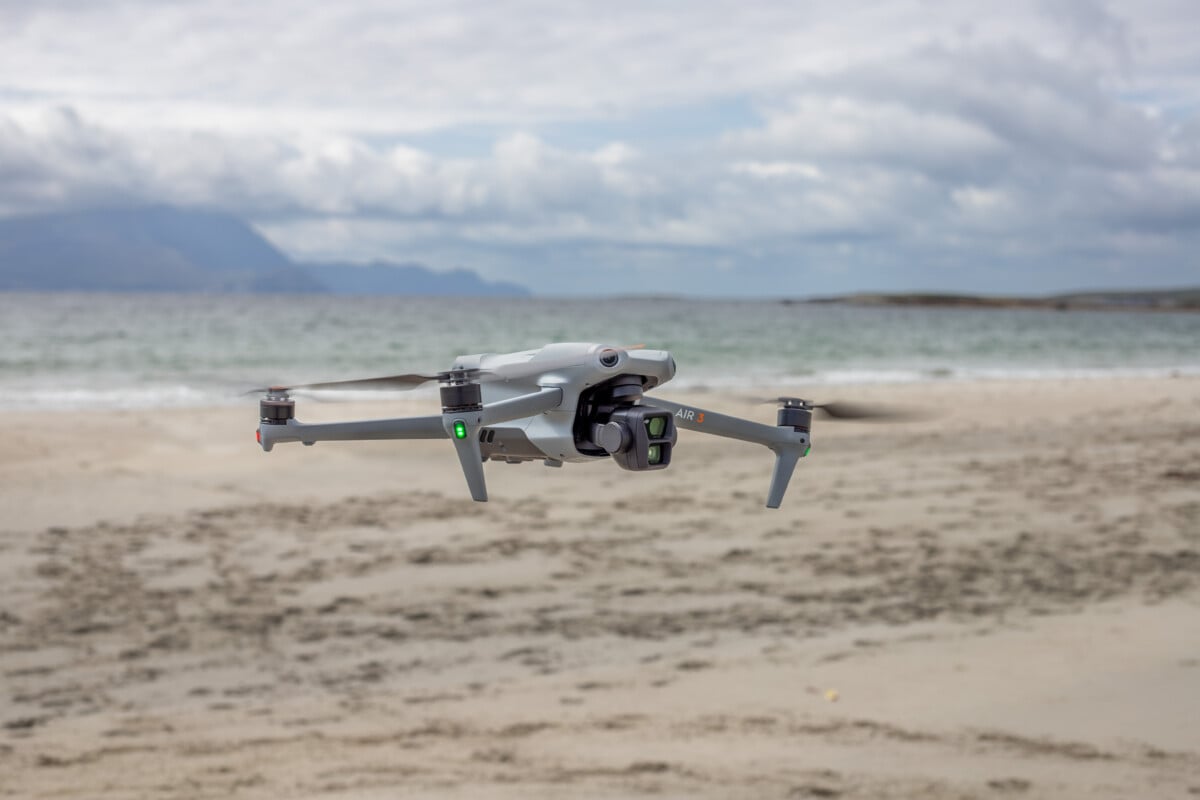With two lenses, high-flying image dynamics, omnidirectional obstacle detection, and exclusive video transmission technology… the DJI Air 3 is a great replacement for the Air 2S and a worthy competitor to the great Mavic. 3 Pro.
Direction Ireland to test the DJI Air 3, to see how this drone rubs shoulders with the windy conditions of the country, the thousand shades of green of its countryside or the intense lights of its coast, and, of course, its capricious climate. For a month, I carried the Air 3 over my shoulder, alongside my Canon 6D Mark II, and drew it as often as the weather allowed, often in high winds, to take almost 1000 photos. And videos with the drone. A long and exhaustive test allowed me to fully understand the DJI Air 3 and its new RC2 remote control.
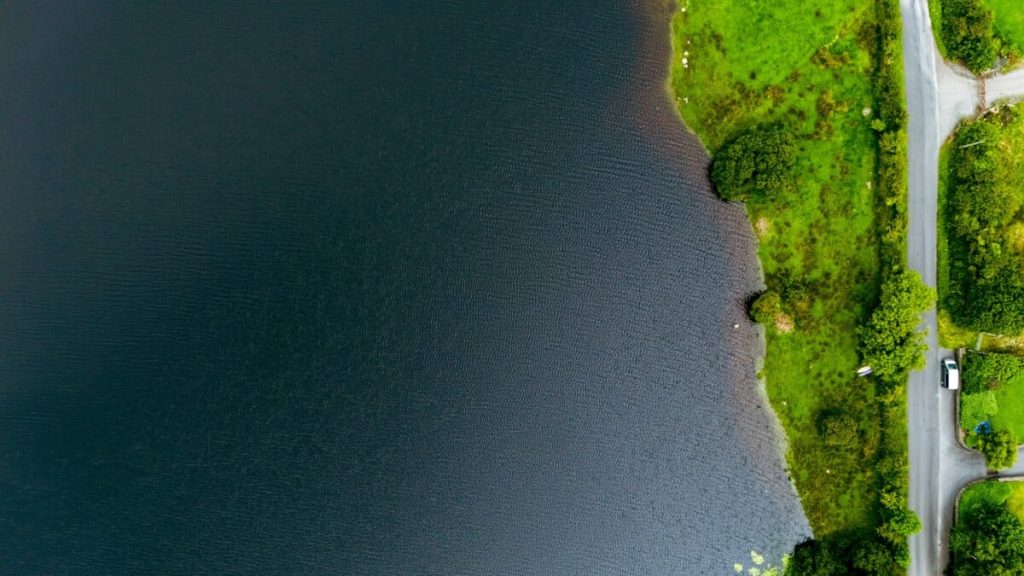
For the first time, DJI equips an Air series model with a second lens, an asset and a privilege hitherto reserved for the Mavic premium range. This opens up possibilities in terms of creativity and practical aspects. The integration of this telephoto lens places greater mechanical constraints on the DJI Air 3, particularly a need for increased stability in flight, which goes hand in hand with a larger size and a few more grams. From this point of view, it is unlikely that the Mini series (< 250 g) will inherit a second lens, and the gap widens a little more with the Air range. On the contrary, it seems to be shrinking with the Mavic range, so amazing are the images produced by the Air 3. However, the Mavic 3 Pro still has pro functions,
DJI Air 3 features
CAMERA
- Photos rawOui
- Sensor resolution48 Mpx
- Lens field of viewMinimum: 82
- ISO SensitivityMinimum: 100 – Maximum: 6400
- Maximum digital zoom9 x
- Video recording definition4K
- Image stabilizerMechanical
- Video profile logOui
BATTERY
- Ability4241 mAh
- Max hover time42 min
- Distance de vol maximum32 km
- Charging power100 watts
SENSORS
- Platform tiltMinimum : -135 – Maximum : 70
- Platform roll minimum: -50 – Maximum: 50
- Panorama of the gondolaMinimum: -27 – Maximum: 27
CONNECTIVITY
- normal wifiWi-Fi 5 (ac)
- Operating frequency Minimum: 2.400 – Maximum: 2.4835
- GeolocationGPS, Galileo, Beidou
PILOTAGE
- Vitesse d’ascension maximum10 m/s
- Max descent speed10 m/s
- Maximum flight speed19 m/s
- Maximum wind resistance12 m/s
- Obstacle detection system forward, backward, down, up
WEIGHTS AND DIMENSIONS
- Weight720 g
- Unfolded width326 mm
- Folded width100,5 mm
- Unfolded length258,8 mm
- Folded length207 mm
- Unfolded height105,8 mm
- Folded height91,1 mm
STORAGE
- Internal memory8 Go
REMOTE
- Ordersremote control with screen, remote control without screen
- Maximum video transmission distance20 km
- Maximum video transmission rate30 Mb/s
- Remote control autonomy360 min
DIVERS
- Release date09/08/2023
A good build quality
Compared to the Air 2S, the DJI Air 3 is a more imposing drone in terms of body and arms. Its increased performance and better wind resistance necessary with its telephoto lens certainly have much to do with it. However, with 710 grams and 32 x 25 x 10 cm folded, the DJI Air 3 is easy to take with you and fits in your hand.
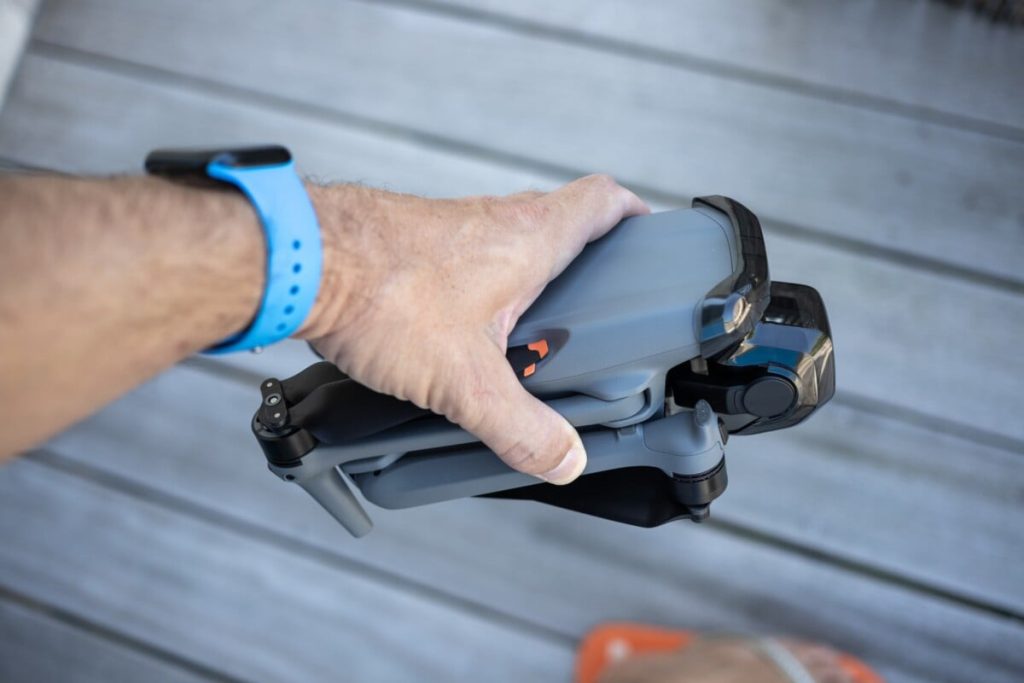
If its weight exceeds 250 grams, a certificate of aptitude is necessary to pilot it. A quick online training (free) on the Alphatango civil aviation site, then a knowledge (and common sense) test, requires about half a day. Also, it is not allowed to fly the DJI Air 3 closer than 50 meters to the public due to its weight.

The assembly quality is above all suspicion, each element being impeccably integrated. The carrycot is protected with a plastic cover which is a bit difficult to fit initially. The drone body is flanked by multiple sensors and lenses for obstacle detection, positioning flashing LEDs, and an interior lighting system for easier landing at night.
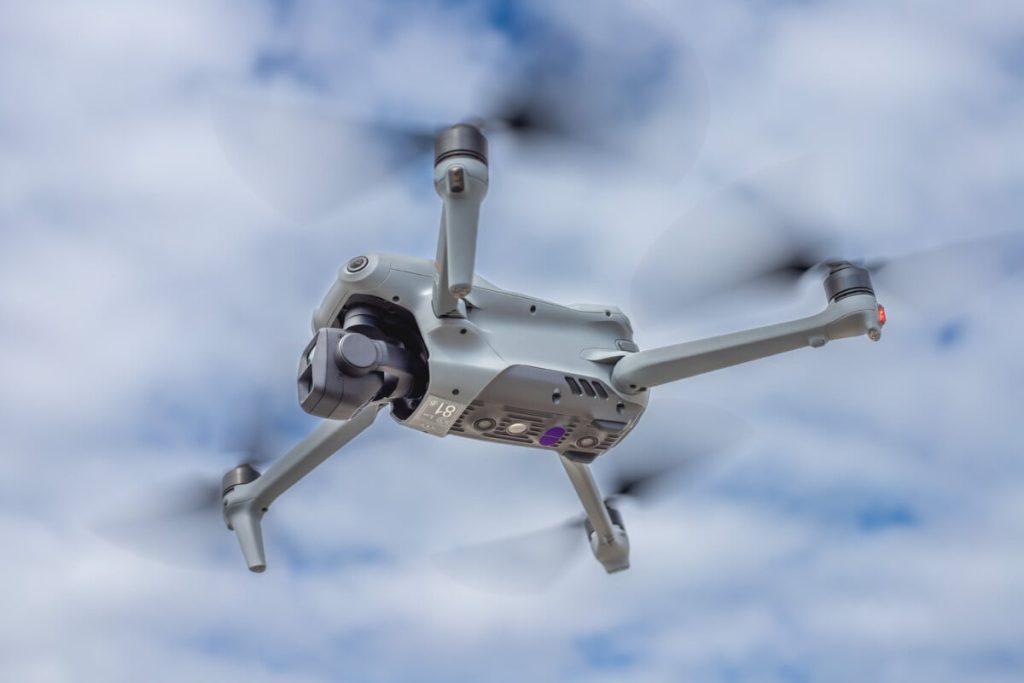
The battery compartment is located at the back and just below the hatch for the microSD card and the USB-C connector (charging, file transfer). Please note DJI does not communicate any IP certification, and use in the rain is therefore questionable. Nothing to worry too much about because, throughout this test, unexpected showers enameled the flights of the Air 3 without posing a problem.
DJI Air 3Very good goals
The DJI Air 3 has two lenses, a 24mm (f/1.7) equivalent wide-angle and a 70mm (f/2.8) telephoto lens, borrowed from the DJI Mini 3 Pro and Mavic 3 Pro, respectively. If the 24 mm wide angle of the DJI Air 3 frames is a bit less wide than the 22 mm of the Air 2S, it lets in more light (f / 1.7 against f / 2.8), allowing it to close faster, resulting in sharper images. Adding a 70mm equivalent focal length – borrowed from the Mavic 3 Pro – is great news in many ways. First, this small TV allows you to film closer without bringing the drone closer to the subject, which is practical in many cases.
This focal length avoids making the drone travel several hundred additional meters, an essential point when the radio transmission is not optimal, the autonomy begins to weaken, or when approaching an area where it is not desirable /allowed to fly. Filming from further away is also a godsend so as not to disturb the animals, which thus do not run away when the drone approaches. I have witnessed it: the Irish sheep prefer 70 mm. Then, this focal length offers an interesting field compression and an attractive parallax effect in the video when the drone revolves around the subject (the background then rotates significantly faster).
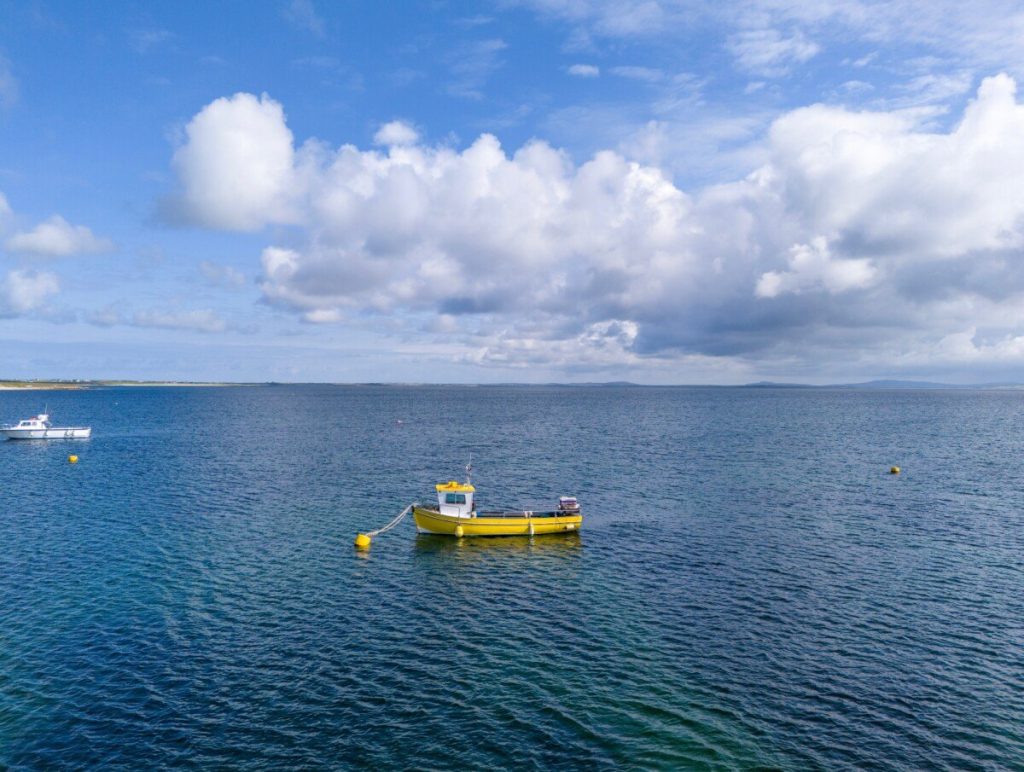
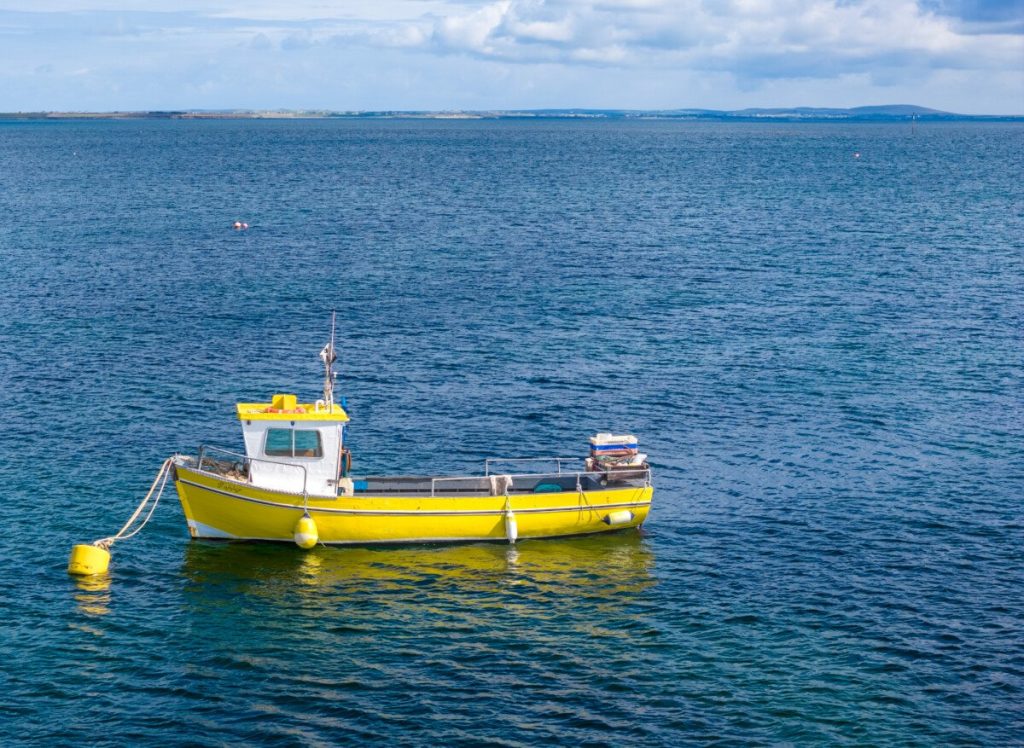
The DJI Air 3 is the first drone in the Air series to receive a second lens and is an asset for creativity. However, the simultaneous use of the two objectives is not planned: using one or the other when filming is necessary.
Two identical sensors
The good news is that the same sensor is associated with the two 24 and 70-mm lenses, which guarantees perfect colorimetric homogeneity between the focal lengths in the photo and the video. This sensor is the same as the one that equips the DJI Mavic 3 Pro (70 mm) and the DJI Mini Pro 3, i.e. a CMOS sensor in 1/1.3″ format, 4/3 ratio, and resolution of 48 MP. It is certainly smaller than the DJI Air 2S (1”) but uses pixel binning and combines several photosites to create a pixel.
This improves sensitivity and dynamic range and offers interesting digital zoom possibilities. We will return to this, but this little sensor is stunning.
DJI Air 3A unique remote control
The DJI Air 3 is offered with two remote controls to choose from, the DJI RC-N2, which requires a smartphone to be attached to it to use the screen with the DJI Fly app, as well as the new DJI RC2, equipped with a screen 5.5 inch LCD. This second remote control is available with the Fly More pack (+ €349), which includes a set of 2 additional batteries and a 3-slot charging dock. The RC2 remote control screen offers a maximum brightness of 700 cd/m², which is a bit tight in direct sunlight to have a valid perception of colors and image composition, but sufficient to fly the drone in many good conditions.
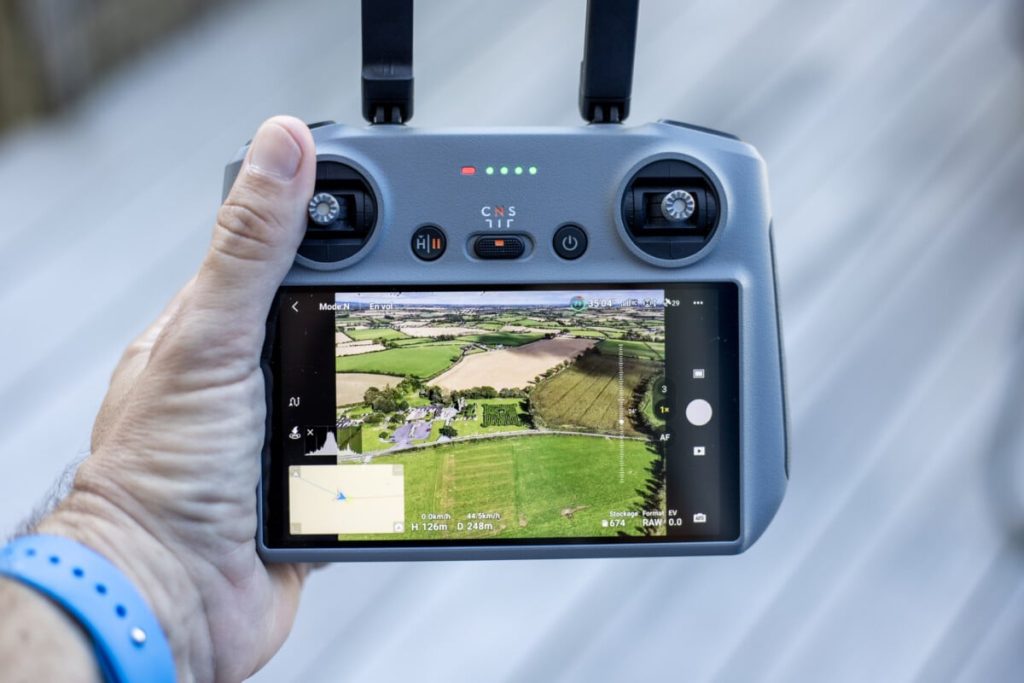
Very reasonable delay before take-off
The RC2 remote controller takes about 25 seconds to start up and load the DJI Fly app, and assuming the drone has picked up enough satellites for its GPS signal, it can take off immediately. If we add to this time the time needed to take the drone out of a holdall, remove the protective shell of the nacelle, unfold its arms, and position it in a place conducive to take-off, it is necessary to count on one minute before to be able to fly.
In the countryside, I often had to wait another 20 to 30 seconds for the GPS signal to have enough connections for the device to record the coordinates of its starting point accurately. So count 1 min 30 s before you can take off the DJI Air 3.
Noise level
A drone is noisy – like a swarm of bees – and this one is no exception with 81 dB. If we respect the legislation that obliges us to fly 50 meters from any public, it is unlikely that Air 3 will disturb anyone. It’s a different story regarding animals and depends greatly on the species. Some remain stoic, and others storm off, at least when filming with 24 mm. With the 70 mm, I never scared away any animal.
Another aspect, the DJI Air 3 is equipped with an internal fan to cool its processor, which comes into action after a few seconds of powering up and produces a noise level of 50 dB at 50 cm. To avoid this inconvenience, extracting the map from the drone to copy its contents is better than powering up the drone and connecting it to your computer.
Increased control distance
The DJI Air 3 is the first DJI drone to benefit from the new DJI O4 tri-band transmission technology and sees its maximum control distance increased from 12 to 20 km. In addition to the fact that French legislation imposes a limit of 8 km and obliges you to fly your drone keeping it in sight, these distances are purely theoretical, the Air 3 not being able to perform a flight of 40 km (2×20 ) with a battery charge.
In practice, no miracle, the radio waves struggle to cross certain landscape reliefs. I lost the connection only 500 meters away because a small hill interfered with the transmission. Hence, adjusting the drone so that it returns to its starting point in such circumstances (which it did not fail to do). When there were no obstacles between the RC2 remote and the Air 3, I could fly the drone up to 3 km away (I have good eyes) while receiving a stutter-free 60p HD video stream. Impressive.
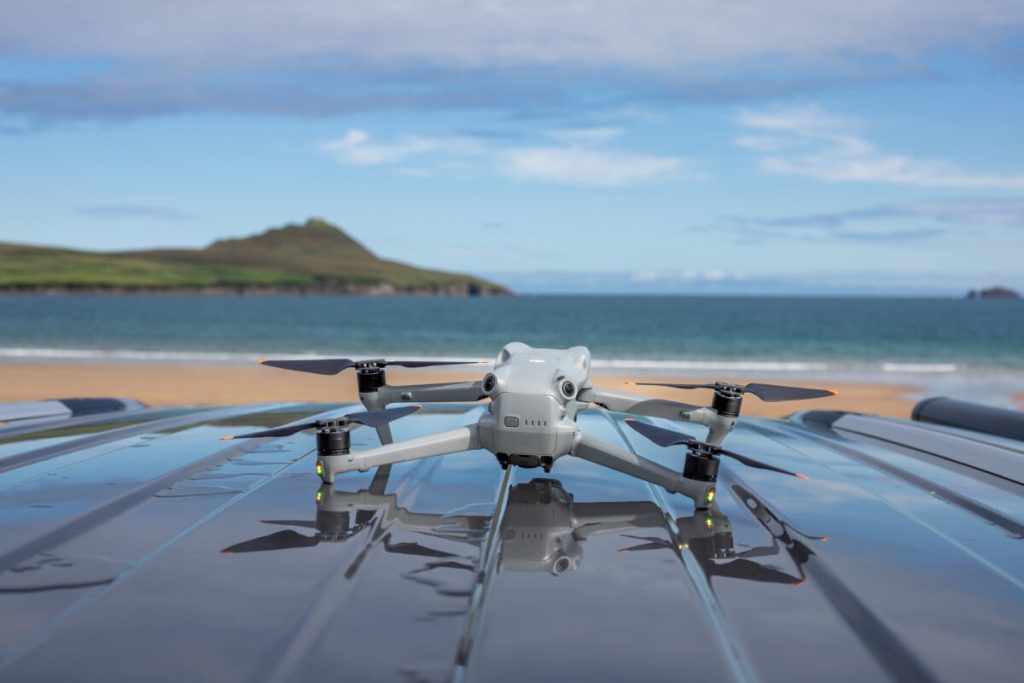
Wind speed and resistance
The DJI Air 3 has three flight modes: Cinema, Normal, and Sport. Its movements are smooth in cinema mode, and its maximum horizontal speed is around 20 km/h. In normal mode, the drone is much more nervous in its movements and can reach 42 km/h. Finally, in sport mode, it flirts with 70 km/h, with one major concession; however: automatic obstacle avoidance can no longer be used.
These performances are identical to those of the DJI Air 2S, except for the resistance to the wind, which increases from 36 to 42 km/h now, probably thanks to the greater weight of the Air 3. Despite this overweight, the drone is lively and reacts to the finger and the eye as soon as you frankly tilt the joysticks of the RC2 remote control. The softness and progressiveness of the latter are also to be welcomed.
Obstacle avoidance
The Air 3 is the first drone in the Air range to be equipped with APAS 5.0 obstacle avoidance technology until now reserved for Mavic 3 models. In detecting obstacles at the front, behind, above, and below the Air 2S, the DJI Air 3 also observes what is happening on its sides and up to 30 meters away. If an obstacle is near, the remote control immediately displays an orange or red light trace depending on the distance and automatically adjusts the drone’s trajectory.
The nacelle points more upwards
Compared to the DJI Air 2S, the Air 3’s gimbal has evolved considerably. More imposing with its two lenses, it benefits from a greater latitude of inclination since, in addition to filming up to 90° downwards, it can do so up to 60° upwards. It is practical for photographing and filming from a low angle. The stabilization of the nacelle is efficient, and the 700 grams of the DJI Air 3 greatly help it to stabilize well when the wind increases. In a month of testing, I never had to complain about attitude problems while I was filming.
I pay particular attention to this in the marine environment, where a crooked horizon line, like the nose in the middle of the face, can be seen. However, the nacelle goes a little out of order and requires recalibration with the app. It only takes a minute.
Tracking and automation
The DJI Fly app offers several in-flight assistance functions to help users find the right framing or not lose their subject. By drawing on the screen the area where the subject is located, you can immediately access the Focus, Tracking, and POI functions. The first makes it possible to keep the subject in the center of the image, whatever the drone’s movements and does not imply to film simultaneously. The Focus mode is, therefore, very useful for finding the appropriate framing for a photo, for example. Tracking mode allows you to follow a moving subject by positioning yourself behind, in front, to the left, or right.
Finally, the MasterShots mode automatically performs half a dozen choreographed movements around the subject; it is up to the user to edit the video file obtained with third-party software, to exploit one or other sequences. Note that it is possible to automatically create waypoints (points on the route) with the remote control to reproduce a route with the DJI Air 3. For example, this can be useful for filming the same subject with different light conditions, depending on the day or the seasons.
DJI Air 3 Significant increase in flight time
The autonomy of the DJI Air 3 is improved compared to the Air 2S, with 46 minutes (maximum) instead of 31, an increase of more than 50%. These values are nevertheless to be put into perspective since DJI measures the autonomy of its drones in linear movement at medium speed, at sea level, without wind, with obstacle detection system inactive, and recording in 1080/24 p only. In a hovering flight, the autonomy is 42 minutes maximum (without wind).
Throughout the month that the Air 3 test lasted, I observed a maximum autonomy of about 30 minutes, in often delicate wind conditions (seaside), flying the drone mainly in Normal mode and filming in 4K/60p (maximum processor demand). In hover, the real autonomy is 40 minutes.
Video
The DJI Air 3 films in 16:9 in 1080p or 4K, with frame rates of 24, 25, 30, 48, 50, or 60 frames per second, and in slow motion in 1080p120 and 4K100. Two codecs are available for recording, AVC and HEVC. The drone determines the data rate, ranging between 37 and 150 Mbps, depending on the resolution, frame rate, and codec chosen by the user.
Photo
The big surprise of the DJI Air 3 is the quality of its photos. Even if the onboard sensors are rather small (1/1.3”), their dynamics are remarkable, and the two bright optical blocks offer astonishing definitions. To be convinced of this, however, it is necessary to abandon the JPEG mode, which does not pay tribute to the sensor’s performance, planes the nuances of colors, and strikes the photos with sharpness artifacts (hard and noisy contours). Photographing in RAW file (12 or 48 MP) and then converting the image to JPEG in Lightroom reveals an amazing amount of detail, especially in overexposed and underexposed areas.
Panorama and exposure bracketing modes
The Panorama mode makes it possible to obtain gigantic images, up to 70 MP, by (automatic) assembly of several shots. Again, it is better to shoot in RAW to preserve maximum detail, then let the drone generate the final photo. The successive shots take up to a minute or more, depending on the mode chosen (panorama, sphere, vertical…), and the final image has a small effect (see below).
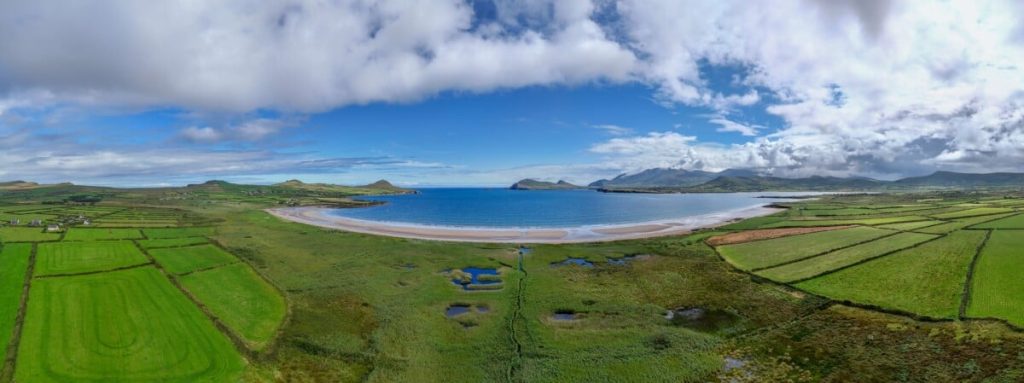
More interesting for amateur photographers, the AEB mode (Automatic Exposure Bracketing) makes it possible to automatically take several shots exposed in different ways to mix them and then obtain a widened dynamic range when the lighting conditions are extreme (sunset, backlight, etc.). In 12 MP mode, it is possible to take between 3 and 5 successive shots, while in 48 MP, the DJI Air 3 is limited to 3 shots, with exposure differences of 0.7 EV.
Storage
The DJI Air 3 has a built-in storage of 8 GB and a slot for a microSD card up to 256 GB. Video recording in 4K60 requires 750 MB at 1.1 GB per minute, and a card of 256 Go can store up to 4 hours of rushes in UHD. In 4K30 or 1080p60 mode, this duration increases to around 8 hours and doubles again in 1080p30. As for the photos, the 48 MP RAW images each weigh around 100 MB. In other words, the internal storage has the merit of existing and troubleshooting in the event of forgetting the card, but it is insufficient. At the end of the month that the DJI Air 3 test lasted, I used a little over 210 GB for a thousand RAW photos and 4K60 videos, using the drone daily.
An interesting Fly More Pack
The Fly More Pack includes a carry bag with a shoulder strap and nylon covering, in which the DJI Air 3, the RC2 remote control, and the tri-battery base can hang, each in a suitable compartment. Inside, a small front pocket allows you to slip any accessories, and why not a smartphone? The inner lining of the flap is flanked by a transparent pocket ideal for storing the spare propellers supplied with the drone and some microSD cards.
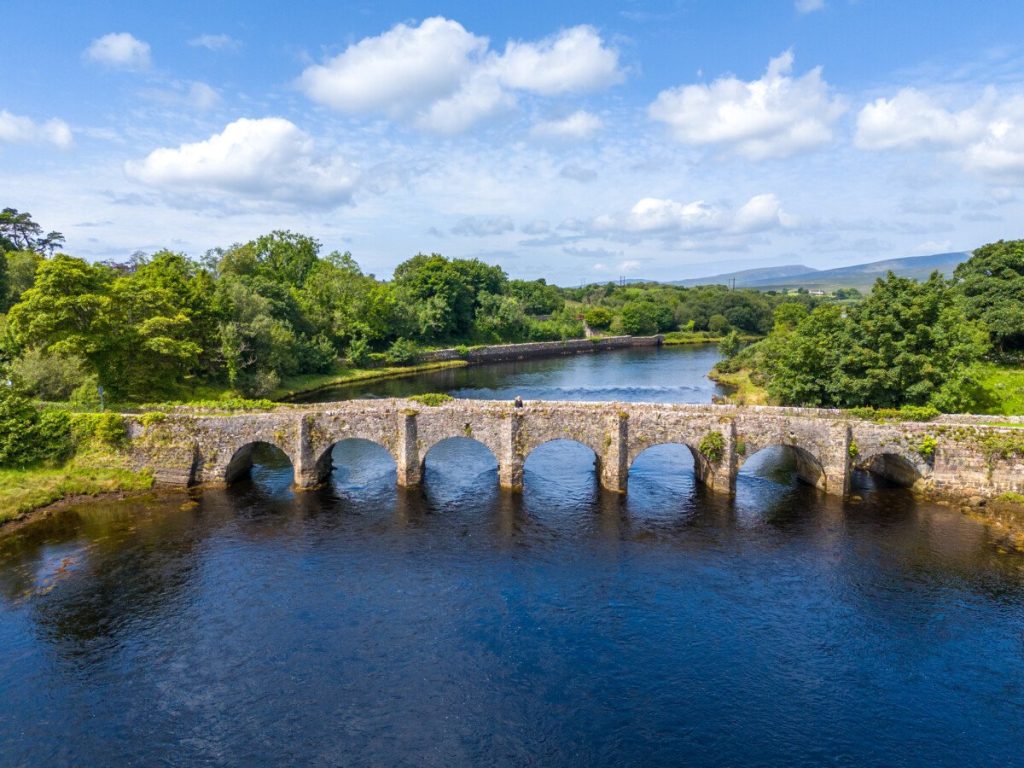
The battery charging station is delivered without a charger, and it is up to the user to obtain one. The idea is certainly to opt for a model capable of delivering 100 W, with the charging time per battery being only one hour. The station works intelligently and charges the weakest battery first, then the next. In a month of travel, I avoided using a second battery since my road trip led me to ride often and recharge the drone during this time. However, if the weather had been more favorable (two sunsets visible in one month, I experienced better in July), it is obvious that one or two batteries would have been very useful to me.
DJI Air 3Price and availability
The DJI Air 3 is available at €1099 with the RC-N2 remote control, at €1349 with this same remote control and the additional Fly More 2-battery pack, and at €1549 with this same pack and the RC2 remote control. The RC2 remote control is sold alone at €369.
Final test score
The DJI Air 3 undoubtedly drains major improvements compared to the Air 2S. The main one is the addition of a 70mm telephoto lens, borrowed directly from the Mavic 3 Pro, which gives the drone greater versatility. Artistic, on the one hand, because this focal length compresses the depth of field and creates an appealing parallax effect when circling a subject, but also practical because the Air 3 travels less distance to film distant subjects. It is discreet for filming or photographing animals.
The image quality is admirable, thanks to quality optical blocks, combined with a surprisingly small 1/1.3 inch sensor with an astonishing dynamic range, to make many semi-pro cameras pale. To take full advantage of it, you must shoot in RAW for photos and in D-LOG M for videos, with some mandatory post-processing, but easy to do with a tablet, smartphone, or computer. The DJI Air 3 is very easy to fly, its wind resistance is very good, and its new omnidirectional detection system completes the security of each flight. To avoid spoiling anything, its autonomy is up and equals that of the great Mavic 3 Pro, to which the DJI Air 3 is one hell of a competition…
PROS OF THE DJI AIR 3
- Two lenses, including a tele 70 mm equivalence
- Sensor with remarkable dynamics
- Images of formidable precision in the video, as in the photo
- D-LOG M videos and RAW photos are rich in detail and generous in post-production
- Autonomy is 50% higher than Air 2S
- Wind speed and resistance
- New O4 transmission technology
- Omnidirectional obstacle detection
- Bright and durable RC2 remote control
NEGATIVES OF THE DJI AIR 3
- The DJI Fly app sometimes tends to let you fly where it’s forbidden (or it’s a good point)
